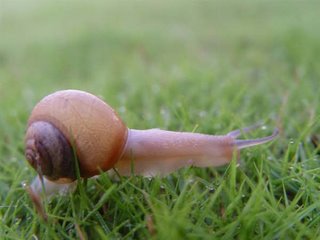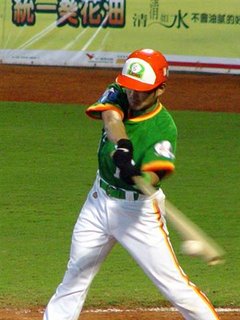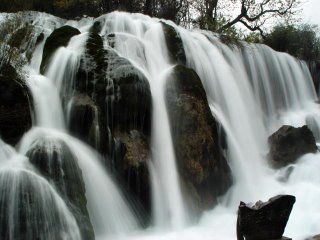Equipment
The development of films and cameras is moving fast, you can almost have any kind of camera to meet your specific needs. For example, if you are going to shoot the movement of stars or polar bears in the north pole, a mechanical single-lens reflex camera (SLR) is pratical, whereas in a baseball game, SLR with auto focus feature comes in handy. Nowadays, digital cameras have caught the public's attention, even some professional photograhers who were contemptuous of the new way to shoot are now silent or even more embracing this trend.
Digital SRLs are my favorites. Changeable lenses free you from the restriction of focal distance, moreover, characters that different lenses posess give you an opportunity to express your creativity. You don't have to develop the film to know if you got the picture you wanted and it helps saving money and developing skills of a beginner dramatically. Meanwhile, the outstanding noise reduction ability and an easier and more powerful post editing makes DSLRs increasingly accepted by professional photographers.
To purchase a camera with a limited budget isn't an easy task, so it's advisable to check the following website before you spend the money.
Digital photography review where you'll find all the reviews of the latest digital cameras and accessories, a digital camera buyers guide, side-by-side comparisons and the most comprehensive database of digital camera features and specifications.
Rob Galbraith Digital photography Insights is a professioanl digital photography forum where you can find discussions about professional digital cameras, professional digital equipment, professional digital workflow,and photography.
Megapixel is a dual linguistic website, there are English and French you can choose from. Except camera reviews, there are many useful articles about camera basics, photography etc., and a forum you can discuss photography with photographers around the world.
Digital image studio, Photosharp, and DC View are traditional Chinese websites where you can find lots of useful information such as test reports of cameras and lenses.
Lighting and exposure
Lighting is a key factor for a sucessful photograph. Different lighting sources or directions give a photo different atmosphere. So how to master lighting to get a stupendous picture? Fordors focus on photography: lighting gives great tips. And the key point is to be able to tell the innate character of the object your are shooting. A few days ago, I went photo shooting with some friends. It was night time and we were shooting in a temple in Tainan City. The guy who took us to the temple turned on the ceiling fluorescent lights to make it easier for us to shoot. However, Paul asked the man to turn them off and used only the candle light in the temple to take pictures. The candle light brought out the characters of the board in golden hue and made it a better picture ( link to picture).

 Aperture and shutter speed must be coordinated to attain a correct exposure, meaning when the aperture is widened a faster shutter speed must be adjusted corespondly and vise versa. Exposure programs, aperture priority and shutter priority, in the camera are practical. In a baseball game, in order to freeze
Aperture and shutter speed must be coordinated to attain a correct exposure, meaning when the aperture is widened a faster shutter speed must be adjusted corespondly and vise versa. Exposure programs, aperture priority and shutter priority, in the camera are practical. In a baseball game, in order to freeze  the ball you might have to set the shutter speed at 1/500 sec.(baseball pic), whereas to get a short depth of field you'll have to widen the aperture and get close to the object (snail pic). An other example, when shooting a waterfall, a long time exposure makes fall look like silver silk and gives the fall an extraordinary atmosphere, whereas a high shutter speed freezes the water while falling and creates a frozen perception.
the ball you might have to set the shutter speed at 1/500 sec.(baseball pic), whereas to get a short depth of field you'll have to widen the aperture and get close to the object (snail pic). An other example, when shooting a waterfall, a long time exposure makes fall look like silver silk and gives the fall an extraordinary atmosphere, whereas a high shutter speed freezes the water while falling and creates a frozen perception.Composition
Centering objects in the frame should be avoided, however, this rule doesn't apply all the time. A better way of composing is to divide the frame into 3 equal sized fractions with virtual lines both vertically and horizontally, where the lines cross are the interesting points of the picture and that's where the focus of your object should be arraged. The answer of how to arrage elements in the picture varies from eye to eye. You can acquaint yourself with composition at Fordos focus on photography: composition and then practice and compare to other photographers from time to time. There are some great websites listed below where you might learn someting from the artists. Tom Wang Album, Randomeyeimages, Artists of Pbase.
Post-Editing
Post-editing of a photograph is a controversial action. Some might consider that as an act of deception, others think differently. In my point of view they all are partly right. When photographers are manipulating the lighting and exposure to attain specific atmosphere, is that considering a deceit? The character of a wide lens gives objects close to the lens the tendency to look bigger than it's real size. Artists use this character to create a perception different from the way you see it with your own eyes, would that be a fraud? On the other hand, photographers who write critiques for magazine post-editing a photo without specifying what kind of modifications have been implemented is not considered a proper action, even if it was just a slight modification.
There are some websites providing some useful information such as Photozone, Photo.net, Johnhendry.Com, Mountain storm fine arts Hyperfocal Distance , and TimGrey.com. You don't wanna miss these.
No comments:
Post a Comment